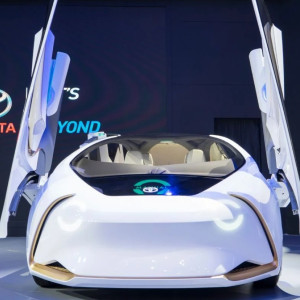Japan unveils the car of the future for 2026: It’s neither electric nor hydrogen


Japanese automobile company Toyota has consistently been pushing boundaries with their innovative engine and vehicle designs. From electric hybrids to hydrogen engines, they have been leading the way for the future of engines. Now, they are not only looking towards the future but into the past.
For 2026, Toyota is set to revive one of their previous models to be available to consumers.
Toyota revives the Previa
The Previa originally had a rough start. The first-generation 2.4-liter Toyota Previa was available in the U.S. from 1990 to 1997 and in the UK during the same period. It was intended to rival popular minivans like the Dodge Caravan, Chrysler Town and Country, and Plymouth Voyager.
However, it struggled to capture significant market share from Chrysler, primarily due to its higher price, lower fuel efficiency, polarizing design, and limitations in engine size caused by its unique mid-engine layout. After reaching a peak of approximately 52,000 units sold in 1991, the Previa's sales sharply declined, with just 3,780 units sold in its final year of production in 1997. However, the car is now making a comeback in 2026 with some new additions and upgrades.
The new and improved Previa is set to be sold as both an electric and plug-in hybrid, on parr with Toyota's plans to remain a leader in the automobile industry for renewable engine solutions. An inside source at Toyota has stated that the Previa will most likely be built with the GA-K platform, the same one used in the Crown, Camry and RAV-4 models.
Originally developed as a hydrogen vehicle but Toyota scraps the idea
Originally, Toyota has planned on developing the new Previa as a hydrogen vehicle. Hydrogen vehicles are the latest up and coming alternative engine solutions[1] which have been taking the automobile world by a storm.
While Toyota was one of the first automobile brands to spearhead developments of hydrogen vehicles, they have decided against releasing a hydrogen fuel-cell vehicle version of the Previa. Toyota allegedly shifted its focus to electric vehicles for the Previa due to the ongoing struggles faced by hydrogen-powered cars. Despite the promising potential of hydrogen as a clean alternative to gasoline, public interest in hydrogen vehicles has been slow to grow.
This lack of enthusiasm has been compounded by the persistent challenge of insufficient infrastructure to support hydrogen cars. The high cost of developing and maintaining hydrogen-supporting infrastructure, combined with the complexity of producing and storing hydrogen, has hindered the widespread adoption of hydrogen-powered vehicles. Additionally, concerns about the overall efficiency and environmental impact of hydrogen production further contributed to the industry's slow progress.
Plug-in hybrids continue to dominate
The popularity of plug-in hybrid electric vehicles has not gone unnoticed by Toyota, and is also most likely a contributing factor towards the decision to release the vehicle as an electric and plug-in hybrid model instead.
In the first quarter of 2024, Toyota sold over 13,500 plug-in hybrid vehicles whereas less than 2,000 fully electric vehicles were sold in the same period. Toyota has been an expert at understanding future market trends in the automobile industry and releasing vehicles which address consumers' most pressing needs and concerns. By closely analyzing shifting preferences, environmental factors, and technological advancements, Toyota has positioned itself as a leader in creating innovative solutions.
The company's efforts to integrate electric vehicles and hydrogen-powered cars into their lineup demonstrate their adaptability to changing consumer demands and regulatory landscapes.
As consumers increasingly prioritize fuel efficiency, sustainability, and cutting-edge technology, Toyota continues to lead the charge, offering a diverse range of vehicles[2] that balance performance, reliability, and environmental responsibility.
Their ability to anticipate market changes and adapt their product offerings ensures they remain competitive in an ever-evolving industry.
References
- ^ latest up and coming alternative engine solutions (www.ecoticias.com)
- ^ offering a diverse range of vehicles (www.ecoticias.com)